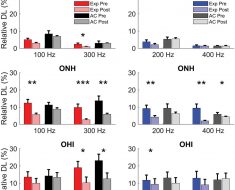Liver disease: NHS Doctor talks about link with alcohol
When you subscribe we will use the information you provide to send you these newsletters.Sometimes they’ll include recommendations for other related newsletters or services we offer.Our Privacy Notice explains more about how we use your data, and your rights.You can unsubscribe at any time.
Fatty liver disease is where fat builds up in the cells of your liver. There are two main types of fatty liver disease – non-alcoholic and alcohol-related liver disease. As the name would suggest, the former isn’t caused by drinking too much alcohol.
Fetor hepaticus, which is sometimes called “breath of the dead”, occurs when breath has a strong, musty smell.
It’s a sign that the liver is having trouble doing its job of filtering out toxic substances, usually due to severe liver disease.
As a result, sulphur substances end up in your bloodstream and can make their way to your lungs.

It’s been known for centuries actually that people with advanced liver disease have a particular smell on their breath, said Dr Margaret O’Hara.
She added: “It’s been described as a sort of fishy smell and actually it’s due to the presence of sulphur compounds.
“Sulphur compounds are organic compounds and are the kind of things that make eggs smell.”
DON’T MISS
How to live longer: Best time of the day to exercise [INSIGHT]
Apple cider vinegar benefits: Suprising health benefits [TIPS]
Hair loss treatment: Rosemary oil shown to help [ADVICE]
The main symptom of fetor hepaticus is breath that smells like a combination of rotten eggs and garlic.
Other people describe it as a slightly sweet smell.
- Additional symptoms include:
- Confusion and disorientation
- Bleeding easily
- Yellow skin
- Swollen legs
- Abdominal swelling

There are other tests to check for fatty liver disease like ultrasounds. But ultrasounds aren’t very good for overweight or elderly people – the majority of people affected by liver disease, Dr O’Hara added.
“So, they’re also not great, so the definitive way to diagnose liver disease is by biopsy and a biopsy is invasive, expensive and obviously you don’t want to be having a biopsy if you can help it.
“But at the moment for cirrhosis that’s really, you’re really got to end up having a biopsy done.
“So, we will be looking at breath as a diagnostic sample instead of blood or using ultrasound as there is information contained within the breath.
“We know there must be something in it because of this fetor hepaticus and if we can identify what they are then you would have a chance of looking back into the bio-chemical processes in the body to see what it is that’s going wrong.”
How is fatty liver disease diagnosed?
According to the NHS, fatty liver disease is often diagnosed after a blood test called a liver function test produces an abnormal result and other liver conditions, such as hepatitis, are ruled out.
But blood tests do not always pick-up fatty liver disease.
As the NHS explains, the condition may also be spotted during an ultrasound scan of your tummy.
This is a type of scan where sound waves are used to create an image of the inside of your body.
You may also need to have a transient elastography which is a non-invasive test, rather like having an a liver biopsy.
“In this test, your doctor will insert a very fine hollow needle into your liver to collect a small sample of tissue,” explains the NHS.
“This is done under local anaesthesia and the sample will be sent to a laboratory to be tested.”
Source: Read Full Article





